Some people have asked what the sentence on my laptop sticker means. I was gifting some of these stickers at the OTN Tour Latam 2016. Maybe it is a bit of a academic / nerdy joke. So let me explain.
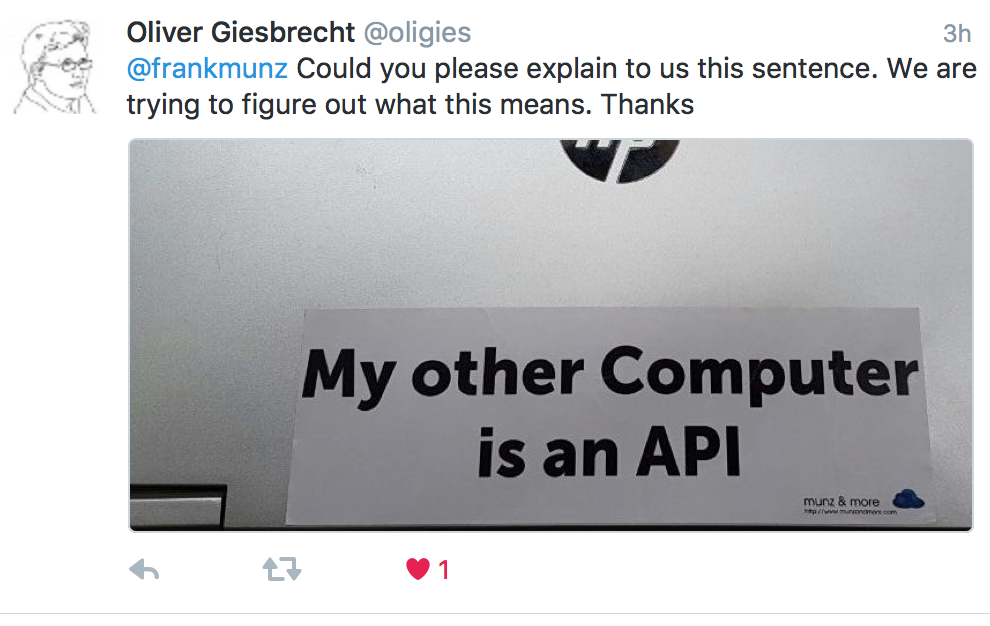
The Posh (and boring)
Once upon a time there were people rich in money but poor in humor driving around in their second cars (typically a small Mercedes, a small BMW or a small Audi) with a sticker on it saying that their first car is a huge Mercedes, Porsche or Bentley. Let’s not waste too much time talking about these people here.
Australia
The cooll stuff as often started in Down Under. Some people with a lifestyle instead of a job came up with a cool car sticker, that basically said it is much nicer to have a small boat and go to the sea for diving than wasting money on a second car. E.g. see here for a rather fun version.
Then (to the best of my knowledge) Google made fun out of it, riding the cloud computing wave with a sticker that said “My other Computer is a Data Center“. Meaning that if you use the cloud you can have a whole data center.
Cloud Computing and APIs
Let’s get a bit more specific: What I pointed out half decade ago (yes, that time when everybody was just laughing about that topic) in my Cloud Computing book is the following: The true beauty of cloud computing is not that you access a compute instance in somebody else’s data center – this is what you could simply get by outsourcing. Guys, it’s more that your whole data center is software. Your whole data center is an API!
With cloud computing the difference of placing a cloud instance in Sydney or Frankfurt is just one single parameter in an API call – that comes at no extra cost. Same for placing it in datacenter 1 in Frankfurt or datacenter 2. So you get geo-redundancy for free! Now go and try this at home.
Also there is no difference in using 100 instances for 1h or using 1 instance for 100h. So you have a massively parallel, distributed supercomputer at your fingertips for a few pennies. Try this in your DC.
I guess now you get an idea what sticker means and why it says API. At the end it is all about APIs. And we haven’t even started to talk about the possibilities of PaaS, SaaS, HaaS, or API Management 🙂 Btw, sometimes I think most marketing people do a really bad job causing FUD instead of promoting tech.

Let me know if you spot more of these stickers out there and send me pics :-)!
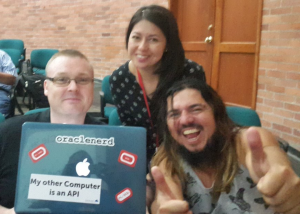

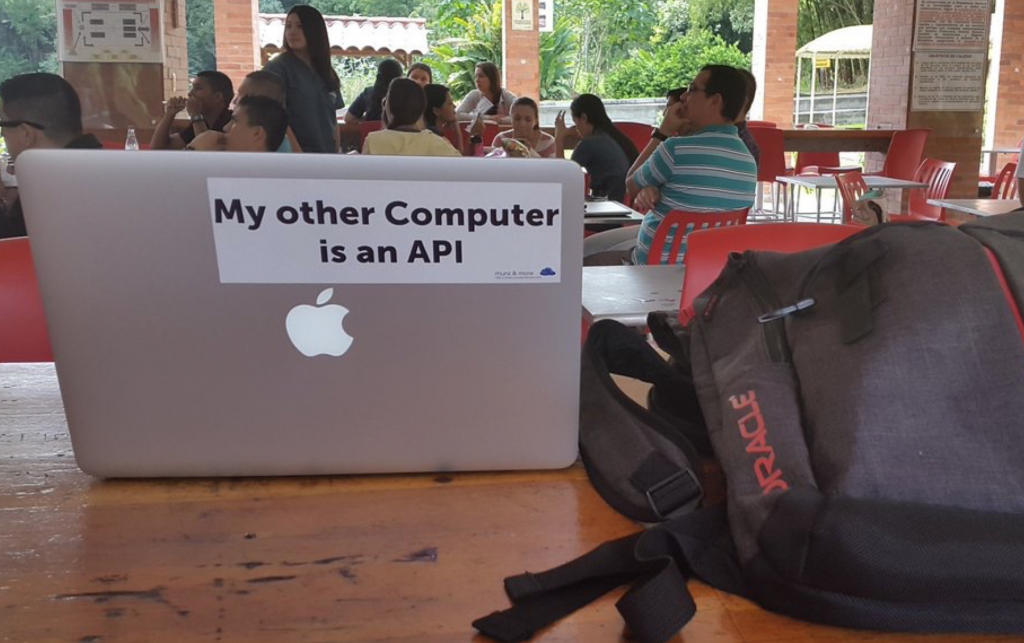
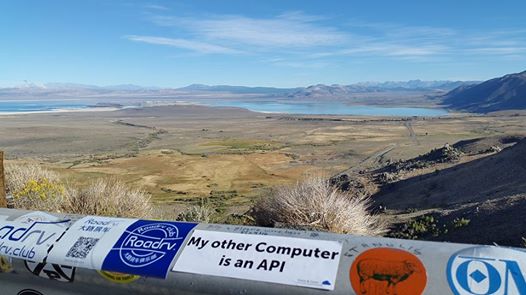
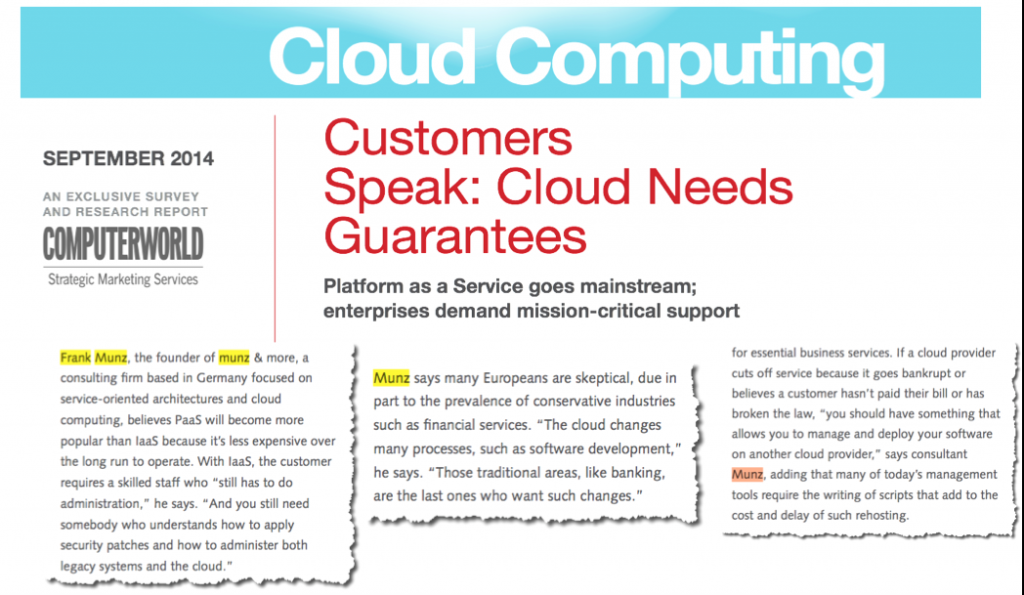
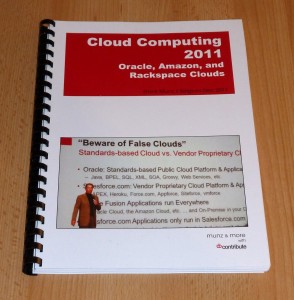
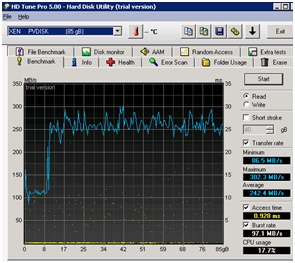
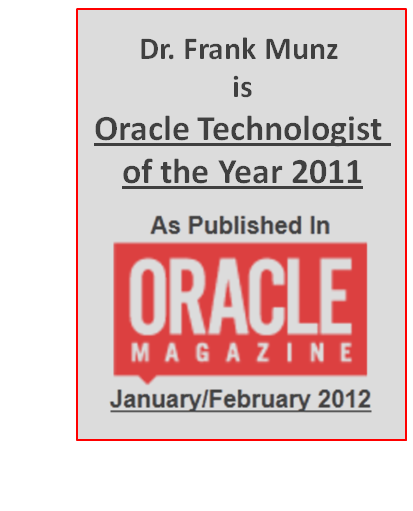
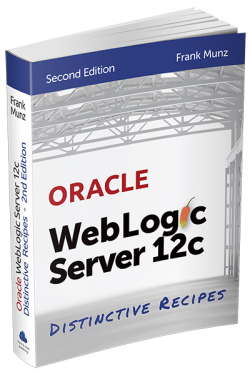 Oracle WebLogic Server 12c Book
Oracle WebLogic Server 12c Book Oracle Middleware and Cloud Computing Book
Oracle Middleware and Cloud Computing Book